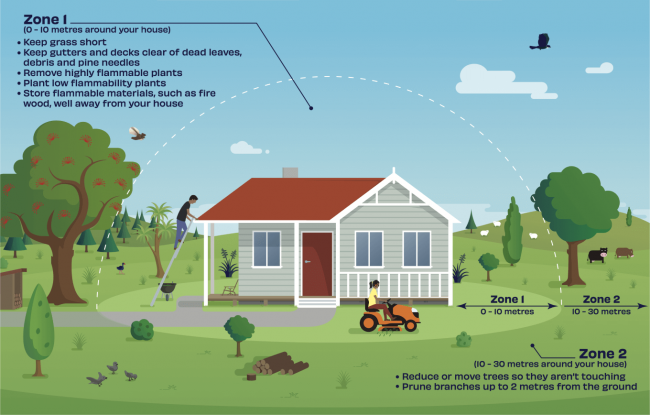As we enter autumn, now is the time to help rural and semi-rural property owners prepare their property for future fire seasons. This is the second phase of our Wildfire Readiness campaign, where the focus is on low flammability plants as autumn and winter are the key planting seasons.
Property owners can do many things to help protect their home and property from the increasing risk of wildfires in New Zealand. A key action is to create defensible space, a carefully managed area around houses or structures where flammable materials are removed or minimised. An important component of defensible space is the planting of low flammability species.

To help educate the public on the important role of low flammability planting for those living in rural and semi-rural locations, we’ve teamed up with Lincoln University and Samuel Whitelock to create two educational videos.
It may be a little known fact that NZ rugby player, Samuel Whitelock, has a Bachelor of Science majoring in Plant Science from Lincoln University (LU). When at LU, he conducted research into the flammability of species commonly planted in shelterbelts on NZ farms and subsequently co-authored a scientific paper on shoot flammability in New Zealand plants published in the International Journal of Wildland Fire.
The videos explain the importance and purpose of low flammability plants and demonstrate plant flammability of two common plant species on the ‘Plant BBQ’ at Lincoln University.
Key campaign messages for Wildfire Readiness are:
- Keep your grass short around buildings;
- Keep gutters and areas around decks clear of dead leaves, debris and pine needles;
- Remove highly flammable plants and plan to plant low flammability species, especially within 10m of your home or other building.
Social media
Proposed copy: It may be a little known fact that NZ rugby player, Samuel Whitelock, has a Bachelor of Science majoring in Plant Science. Which is why we have partnered with him to spread the word about how low flammability plants can help defend your home and property from wildfire. Now’s the time to prepare, learn more at https://checkitsalright.nz/reduce-your-risk/protecting-your-home-and-livestock

Facebook Instagram 15 sec story and real














